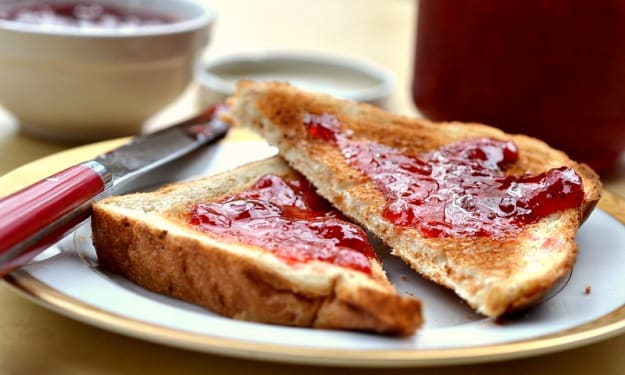
Meals Ready to Eat, or MRE, is a total self-contained complete meal that withstands rough conditions and exposure to the elements. They are the primary main operational food ration for the US Military. Each MRE contains on average 1,250 calories, 13% protein, 36% fat, 51% of carbohydrates, and a third of the average adult’s daily recommended allotment of vitamins and minerals. Someone can safely consume everything inside of it cold, but they contain a flameless ration heater that can warm it up, making them taste better. To make an MRE at home, you’ll need a vacuum sealer, permanent marker, food-grade Mylar bags both large and small, and food to put in it.
Step One: Entree
This is the main course of your MRE and is usually a type of meat. You can mix mayonnaise with tuna from the pouches to make a tuna salad. Mix it with cheese and crushed crackers for a cheap tuna casserole. They come in an assortment of flavors that can be tasty on their own. Add 2 cups of freeze-dried ground beef or beef cubes to a small Mylar bag and seal it if you prefer a beef option. Ground beef can be mixed with a packet of spaghetti sauce for bun-less sloppy joe dinner. The cubed beef can be accompanied by a bullion packet or cube for a cold soup. It might not be pleasant, but it’s better than an empty stomach. Like tuna, chicken comes in a variety of fun flavors, both cubed and shredded, that can pop when mixed with any of the above-listed sauces. Just remember that water is limited in a crisis, so avoid food that requires large amounts of it to cook, like pasta. Also, try to avoid cans as they add to the weight of the MRE, making them harder to carry in bulk.
Step Two: Side Dish
What dinner isn’t complete without a yummy side! When making your MRE, try to focus on ones that don’t require water to prep. A good side to have would be to seal a cup, or two, of your favorite freeze-dried fruit or vegetable in a Mylar bag. If you are lucky enough to have the excess water to spare, a cup of rice or potato flakes in a sealed Mylar bag would work wonders for your dish. Just remember to prepare it outside the bag in a metal cup or pot, as some brands do not handle heat very well. If you are making a breakfast-themed MRE, a bag of oats or cereal will work out great because you can eat them dry. Avoid junk food, like chips or snack cakes, because they often have a very short shelf-life despite the rumors of their ability to survive a nuclear holocaust. They can also become easily destroyed when mishandled while on the run, possibly ruining the food nearby.
Step Three: The Snack
Most MREs include a snack or two for later. The snack portion is usually a cracker or a type of hardtack with a spread of some sort. Peanut butter, jelly, and honey come in packet form and can bring added flavor to the MRE. I’d avoid the butter packets as they melt in high-temperature zones, making them difficult to manage and creating a sticky situation. Believe it or not, your local gas station would be a great place to find a variety of compact snacks designed for eating on the go. Tubes of unsalted nuts and meat sticks can provide you with a protein boost. If it’s going to be consumed within a couple of months, then those sandwich crackers can replace the hard tack and spread option mentioned earlier. Trail mix and granola bars can be bought in bulk at the grocery store. Some types contain dried fruit, giving you extra vitamins. Avoid salty foods, like pretzels and popcorn, as these will make you thirsty. As mentioned before, avoid snack cakes and mini donuts because they spoil fast and can get damaged easily if roughly handled.
Step Four: Dessert
You’re going to need energy while out in the field, and a great way to get it would be through sugar. It doesn’t have to be anything fancy, like freeze-dried ice cream or cheesecake bites. Those cookie sleeves or energy bars are sufficient. Candy can also make a sweet after-dinner treat. Good choices would be skittles, starbursts, and tootsie rolls. I would avoid chocolate, as it could melt throughout the MRE. If you have to have candy, M&Ms would be the only exception to this rule because it was invented for military use for this reason. If you have extra water, you can invest in those hiking meal dessert pouches like cobbler, brownies, or cherry crisp.
Step Five: A Beverage
You can’t eat without some water. Your stomach needs a liquid of some sort to help digest food. Add at least two water pouches to each of your MREs for this reason. To make it more palatable, add a drink mix packet to it. Many companies sell their signature drink in tube form that can be added to bottles of water. Another good drink mix to have on hand would be hot chocolate, instant coffee, or a tea bag. Most MREs contain all three. If you add these, don’t forget to include sugar, cream, and honey to enhance the flavor. Juice pouches, or a couple of those tiny barrel jugs, are great additions, but they add a bit more weight to the MRE, so use sparingly. Same with water pouches, so less is better. I’d avoid juice boxes because the packaging is flimsy and prone to leaking when the glue in the corners dries out.
Step Six: Extras
Don’t forget the little things that complete the meal. In the ones I make, I include a little mess kit in a small sealed Mylar bag that contains a plastic fork, spoon, knife, a couple of flossing picks, and a napkin. If the kit contains coffee or tea, I include a stirrer in the mess kit. You can buy flameless ration heaters in a bulk pack of 25, but they are expensive for personal use. If you buy some, use them sparingly. Condiment and seasoning packets are good to include in your MREs. Next time you are out eating, slide a couple of extra sauce, salt, and pepper packets into your pocket for them. In the jewelry section of your local craft store, they sell small 2 in. by 2 in. baggies for beads, and fill them with your favorite seasoning or dried herbs. Add a couple of wet wipes so you can clean your hands and surface prior to eating, and one to clean up afterward. Lastly, include a mint or a stick of chewing gum to freshen your mouth up after eating.
Step Seven: Assembling The MRE
Lastly, get your food items together and place them inside a large Mylar bag. Make sure it lays flat by putting the big items on the bottom and stacking the small items on top of it like a pyramid of sorts. Try to keep it as compact as possible, because the bulkier it looks, the more space it’ll take up. Once everything is inside of it, close it with the vacuum sealer, pushing out as much air as you can while doing it. Then get your permanent marker and write on top of a different large Mylar bag what type it is and the expiration date of the first item in it that is going to go bad. This is going to ensure that your MREs are rotated properly. Place the sealed Mylar bag into the bag you labeled and repeat the sealing process. By double-bagging them, you are providing the contents inside the MRE extra protection, and the second bag can also collect the trash to ensure proper clean-up of the campsite. In the end, your MRE should weigh only a pound, or 16oz, as this is the standard weight for one. It’s okay if it is a little off, but not too much, as extra weight can bog you down.
About the Creator
M.L. Lewis
Welcome to my little slice of pie. This blog will primarily focus on prepping and homesteading skills with a sprinkle of fiction every now and then.






Comments
There are no comments for this story
Be the first to respond and start the conversation.